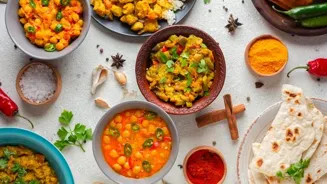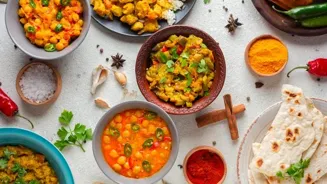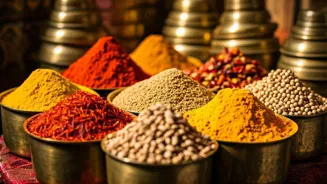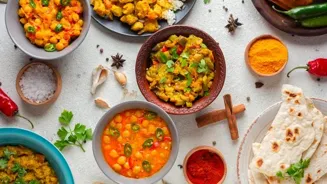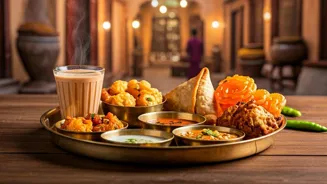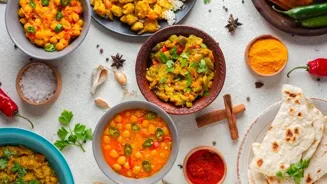Unravel the Origins of Popular Indian Street Foods - Discover the fascinating evolution of iconic snacks!
India, a land of vibrant culture and diverse flavours, is renowned for its incredible street food
scene. From the bustling lanes of Mumbai to the historical bylanes of Delhi, the aroma of spices and the sizzle of hot oil beckon food lovers from all walks of life.
But have you ever wondered about the origins of these beloved culinary delights? Many of these dishes have travelled a long and winding road to become the snacks we know and love today.
Let's take a delicious dive into the history of some popular Indian street foods and discover the fascinating stories behind them. We might just surprise ourselves with what we learn. Many of these dishes weren't entirely "Indian" to begin with!
Pani Puri: Street food evolution in India
Pani Puri, the quintessential street food, is enjoyed across India with different names like Golgappa, Puchka, and Gupchup.
These small, crispy spheres filled with a tangy tamarind water, potatoes, chickpeas, and spices have a captivating history that reveals a lot about the evolution of Indian cuisine.
The most popular origin story says that Pani Puri originated in Magadha, an ancient kingdom located in present-day South Bihar, Northern parts of India. It was initially known as "Phulki". Believed to have been created as a solution for a newly married woman with limited resources.
The lady was challenged to create a dish that could feed her entire family. Using leftover ingredients, she devised this innovative snack.
This dish was not only tasty but also filling, eventually finding its way to the streets and becoming a popular treat, evolving over time with regional variations in fillings and spiced water.
The evolution of Pani Puri is a testament to the resourcefulness and culinary creativity of Indian home cooks.
The samosa: a global snack born in the Middle East, evolved in India with various fillings
The beloved samosa, a savory triangular pastry filled with spiced potatoes and peas, might seem like an inherently Indian snack, but its origins lie far beyond the borders of the subcontinent. The samosa's journey began in the Middle East, where it was known as "Sambosa".
It travelled along trade routes to India during the 13th or 14th century. Cooks in the royal kitchens of the Delhi Sultanate adapted the recipe to suit local tastes, incorporating Indian spices and vegetarian friendly fillings. Earlier non vegetarian.
The fillings initially were minced meat, nuts, and dried fruits. The samosa quickly gained popularity across the country and evolved into many variations with different fillings and crusts. It showcases how cultural exchange can lead to the creation of iconic dishes.
Today, there are hundreds of variations and the samosa has also travelled back around the world.
Bhel Puri: Mumbai's iconic street snack with sweet, tangy, spicy flavors
Bhel Puri, a delightful mix of puffed rice, vegetables, chutneys, and spices, is synonymous with the bustling streets of Mumbai. This crunchy and flavorful snack is a favorite among locals and tourists alike. Bhel Puri’s origin is linked to the Gujarati community in Mumbai.
It is said to have evolved from the dish "Bhata", a simple snack made with puffed rice. Street vendors or hawkers began adding various chutneys, vegetables, and spices to create a more complex and appealing snack.
Thus, it has rapidly gained popularity and became a ubiquitous street food in Mumbai and across India. The unique combination of sweet, tangy, and spicy flavours is what makes Bhel Puri so irresistible. The modern day version is heavily influenced by the tastes from Mumbai.
The snack has humble beginnings, but the history of Bhel Puri shows how innovative street vendors can create culinary gems.
Aloo Tikki: popular street food with evolving flavors from North India
Aloo Tikki, crispy potato patties served with chutneys and spices, is another popular street food with an interesting story. While the exact origins are difficult to pinpoint, Aloo Tikki is believed to have started as a homemade snack in North Indian homes.
As families migrated from parts of northern India to other regions around country, and eventually setting up small businesses, they ended up offering Aloo Tikki along with other fare that they served. The dish became popular, and soon it was common to find it at stalls.
Gradually, street vendors began to experiment with different toppings and sauces, leading to the diverse range of Aloo Tikki variations we see today.
Dabeli: Sweet, spicy, tangy street food from Gujarat gains nationwide popularity
Dabeli, which has sweet, spicy and tangy potato mixture between two halves of a pav, is one of the more recent street foods to gain popularity across India. Dabeli means "pressed bread" in Gujarati, making it quite self-explanatory.
It originated in the Kutch region of Gujarat, created by Keshavji Gabha Chudasama in the 1960s. He started with a small handcart selling Dabeli, which gradually gained popularity and reached other parts of Gujarat.
Over time, as people migrated from Gujarat to other places and cities, they brought the recipe with them. As Dabeli started being sold across the country, it continued to evolve. Vendors experimented with different spice blends, toppings to cater to local tastes.
It quickly became a popular snack across India.
Mumbai's iconic street food: Pav Bhaji's humble origins and evolution
Considered one of the signature dishes of Mumbai street food scene, Pav Bhaji is a mixture of mashed vegetables cooked in a fiery blend of aromatic spices, served with buttered pav or bread rolls.
The dish is believed to have originated in the 1850s as a quick and affordable meal for textile mill workers in Mumbai. To meet the demands of hungry workers, vendors came up with a clever idea.
A mixture of leftover vegetables were cooked together, mashed, and spiced to create a single dish that they referred as Bhaji. This Bhaji was served with Pav, a type of bread that had been introduced by Portuguese settlers initially.
Over time, Pav Bhaji became increasingly popular, evolving from a humble meal to a street food staple. Today has many variations and has become a symbol of Mumbai's vibrant food culture. The history of snacks on the streets of India has always been very interesting.


